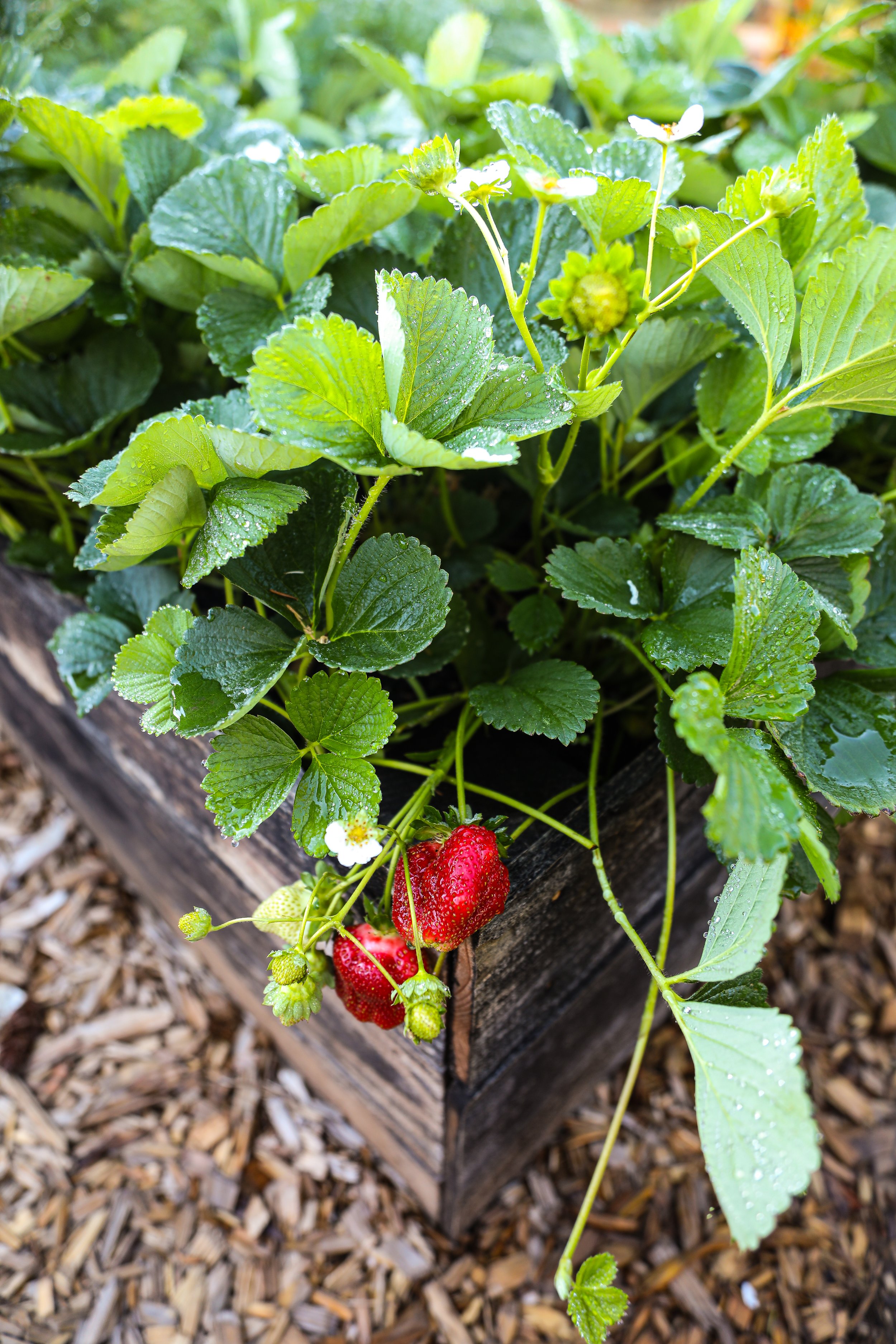How to Care for Everbearing Strawberries in August and September
Everbearing strawberries are a gardener’s gift that keeps on giving. Unlike June-bearing varieties that produce one large crop in early summer, everbearing strawberries offer multiple harvests—typically one in early summer and another in late summer to early fall.
But to get the most out of your everbearing patch, it’s crucial to give your plants the right care as the seasons begin to shift. Here’s how to keep your strawberries thriving in August and September.
August: Encourage That Second Crop
1. Keep Watering Consistent
Strawberries need about 1–1.5 inches of water per week, and in August’s heat, that may mean deep watering 2–3 times weekly. Try to water in the morning and avoid soaking the foliage to reduce disease risk. A moisture meter is a helpful tool to ensure you're not underwatering (or overwatering), especially in raised beds or containers.
2. Light Fertilizing (if needed)
If your plants look a little tired after their first flush, a light side dressing of balanced fertilizer (like a 10-10-10 or organic compost tea) can help fuel the next round of fruit. But go easy—over-fertilizing can lead to lots of leaves and little fruit.
3. Remove Runners
Everbearers put more energy into fruiting if you remove runners (those long shoots trying to create new baby plants). If you want more plants next year, root a few runners in reusable pots or net cups filled with soil and keep them near the mother plant. Once established, you can transplant them in fall or early spring.
4. Add Strawberry Supports
Keep fruit clean and reduce rot by using strawberry supports or cages to elevate berries off damp soil. These also help increase airflow around the base of the plant, which reduces fungal issues during late-summer humidity.
5. Watch for Pests
August heat brings out the bugs. Check under leaves for aphids, spider mites, or slugs. Neem oil or insecticidal soap can help with infestations, or try hand-picking early in the morning.
September: Prep for the Final Harvest & Transition to Fall
1. Enjoy the Last Harvest
With the cooler evenings in September, your plants may produce their final wave of berries. Continue to pick ripe fruit daily to prevent rot and encourage more flowering.
2. Stop Fertilizing by Mid-Month
You want the plants to begin slowing down growth and preparing for dormancy. Fertilizing too late in the season can produce tender new growth that’s vulnerable to frost.
3. Thin Leaves and Runners (if needed)
Removing any dead or diseased foliage improves airflow and reduces fungal problems. If your patch is crowded, selectively thin out excess greenery.
4. Mulch or Cover Bare Soil
As temperatures start to cool, begin prepping the bed for fall. Apply straw or leaf mulch around plants to insulate roots and suppress weeds. Wait to do a full winter mulch until after the first hard frost, but it’s fine to start getting materials in place.
Bonus Tips
Keep an Eye on Soil Moisture: A simple moisture meter can help you stay ahead of dry soil during warm days.
Mark Productive Plants: If you want to divide your patch or transplant in the spring, tag your best producers now.
Container Strawberries? Move them to a sheltered spot once nights start dipping below 40°F.
August and September are make-or-break months for everbearing strawberries. A little extra attention during this time rewards you with sweet fruit now and healthy plants ready to burst back in spring. So keep watering, prune smartly, elevate your berries with supports, and don’t forget to enjoy those ruby-red treats while they last!


